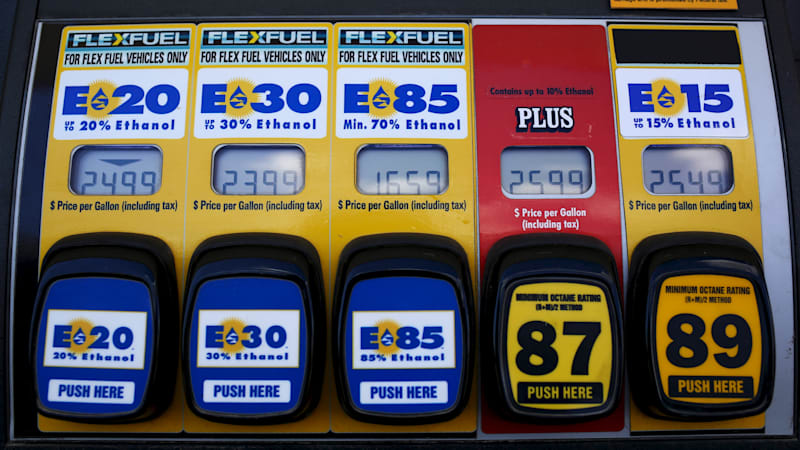What is E15 gas? Some FAQs answered

A gas station in Iowa, where support for ethanol-blended gasoline is strong (Reuters)
In an attempt to lower gasoline prices, President Biden announced that the federal rule against selling E15 in the summer months will be lifted in an attempt to lower gasoline prices. Here are some common questions — and answers, of course — about the temporary rule change.
What is E15?
Ethanol is a renewable ethyl alcohol fuel produced from a variety of plant materials. E15 is a fuel blend of 15 percent ethanol and 85 percent gasoline. Other gasoline-ethanol blends use similar terminology. E10 (gasoline with 10 percent ethanol mixed in) is common throughout the U.S., and some stations sell E85 (which is 85 percent ethanol and 15 percent fossil fuel gasoline; it takes a specially built engine to burn E85).
Has E15 been sold in the summer before?
CNN reports that before 2011, the federal government didn’t have any rules in place limiting the sale of E15 during warmer months. The last time the summer blend rule was paused was in 2019 as part of the Trump administration’s trade war with China. A panel of federal judges later blocked that pause, and the Biden administration was quick to point out differences between the two pauses — which do seem awfully similar in effect, if not in purpose — because the current situation is a response to a fuel supply emergency and not simply a way to try and boost ethanol sales.
What are the benefits of E15?
Calculating the benefits of E15 has been an area of major disagreement ever since the Bush administration made a big push for biofuels in the early 2000s. Today, the U.S. Department of Energy says that producing ethanol from corn “does not require more energy than the amount of energy contained in the fuel itself,” so it has a positive energy balance. NPR reports that a 2018 report by the Government Accountability Office said ethanol has a “limited effect, if any, on greenhouse gas emissions.”
What are the drawbacks of E15?
Aside from continuing questions about overall emissions, there are certainly some drawbacks to using E15 in warmer months that led to the decade-long ban. CNN reports that the alcohol in ethanol can create ground-level air pollution because it evaporates easier than regular gasoline, and that the evaporated particles react in the sun and cause smog.
Can my vehicle use it?
Almost certainly, unless you’ve got classic license plates. The EPA says that any car, SUV and light-duty truck from model year 2001 or after can burn E15 without problem.
There was a question in the past about whether or not a newer type of station pump might damage older vehicles or some motorcycles. The issue revolved around the small number of pumps that dispense both E10 and E15 from the same hose. Since someone refueling with E15 would leave the station with the hose still full of E15, the EPA recommended a minimum purchase of four gallons to make sure that the amount of ethanol in the vehicle’s tank ended up being no higher than 10 percent. Anything with an ethanol component higher than E10 can cause damage to some motorcycle engines, but the EPA said in 2016 that it was not aware of even a single gasoline station in the U.S. that doesn’t offer either a gasoline without any ethanol in it whatsoever (E0) or E10.
Finally, as with motorcycles, E15 might not be acceptable in outboard motors or other small engines. Consult your owner’s manual.



